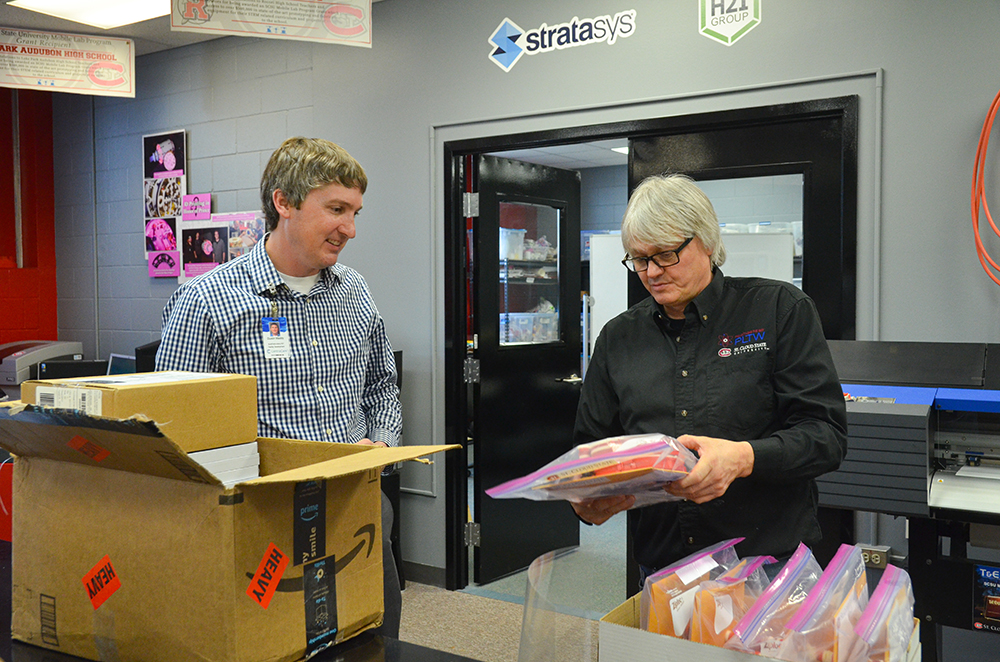Dustin Maddy collects face shield kits from Chuck Hentges
Assistant Professor Chuck Hentges, right, explains what is included in each face shield kit to CentraCare's Dustin Maddy who arrived on campus April 2 to collect the first batch of 300 face shields. Each kit includes assembly instructions, 25 face shield holders and 50 transparency shields.
The St. Cloud State University Make It Space is designed to connect students with printing technology to learn and produce products. Today it is printing face shields to help protect doctors and nurses in Minnesota.
Professors Kurt Helgeson, Chuck Hentges and Mark Schroll had been looking for ways to use the campus 3D printers to help with the coronavirus response. They got the idea to print face shields from a nurse at CentraCare.
The nurse connected them with CentraCare’s Dustin Maddy, who sources material for all of CentraCare’s clinics.
The professors run the Make It Space on campus. The Make It Space is a lab located in Headley Hall. It a resource for students, who can come to the lab to 3D print their designs, print posters, or etch on wood, metal or plastic.
Maddy had been working with another maker space in Minneapolis, Nordeast Makers, to design an easy to print face shield. Helgeson and Schroll modified the original design and started printing with all 10 St. Cloud State 3D printers March 30 as their students got back to taking classes remotely.
The St. Cloud State lab is printing 750 of the face shields a week, so that CentraCare will be ready when a surge of COVID-19 cases arrives in Minnesota, Schroll said.
St. Cloud State and CentraCare are receiving assistance in their efforts from 3D printer manufacturer Stratasys and H2I Group, which provides printer materials, with discounted printing materials to use for making the shields. St. Cloud State has 10 3D printers, many of which are usually loaned out to high schools through a partnership to make technology accessible in the schools.
The shields include a 3D printed headband and the shield, made from an overhead projector transparency, which attaches to the headband. They have already cut more than 1,000 of the transparencies to fit the face shield holders they are printing.
The design is lightweight and stable. They are easy to snap on and snap off as needed. The transparencies work perfectly, Schroll said.
Helgeson and Schroll worked with Provost Dan Gregory to put out a campus-wide call for the transparency sheets and were overwhelmed by the level of donations.
Other faculty from the College of Science and Engineering offered to come in and help print, as did the lab’s usual student workers, and most of the nursing department students, Schroll said.
“The outpouring of assistance has been beautiful,” he said.
For now Schroll and Helgeson are able to handle the workload of setting up the printers and letting them print overnight. They are keeping access to the labs low and keeping students at home for their safety.
They are encouraging others with 3D printers to check with their area hospitals and clinics to see what their needs might be. They have made the instructions for their face masks available on the Department of Environmental and Technological Studies website for anyone to use.
Schroll and Helgeson say they are happy to have found a way to help CentraCare prepare its doctors and nurses in a way that meets what they need.
“It’s an honor to do the work,” Schroll said.
Helgeson agreed.
“Working together we can make a difference during these difficult times,” he said.

